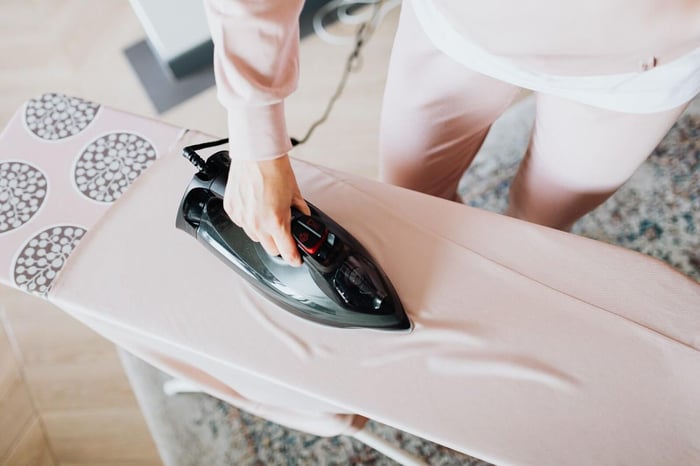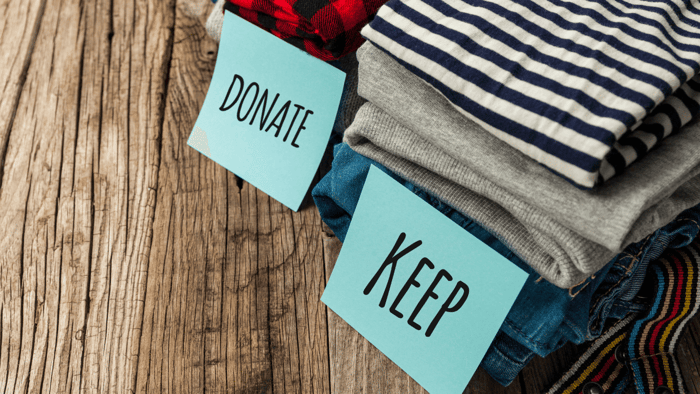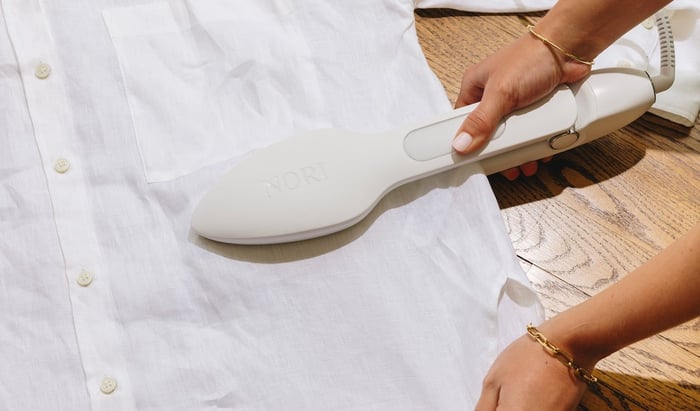 Washing clothes properly is one of those things that people often overlook. But knowing how to hand wash a shirt correctly can save you money and help keep your clothing looking good longer. Here are some tips to make sure your shirts and other clothes always look great.
Washing clothes properly is one of those things that people often overlook. But knowing how to hand wash a shirt correctly can save you money and help keep your clothing looking good longer. Here are some tips to make sure your shirts and other clothes always look great.
Hand washing clothes isn't as simple as throwing a load of laundry into the washing machine. But it's the best option for keeping clothing looking new. In fact, the safest way to wash your garments is by hand.

Attention: Use discount code "SHOP10" at checkout to save 10% on The Nori Press!
Before pouring a bucket full of sudsy water over your clothes, make sure to read the care tag. Some labels indicate whether the item can be hand washed or needs to be cleaned by machine. You'll want to follow the washing directions exactly since some fabrics may need special care. For example, silk shirts should never be washed in hot water because it could ruin the fibers.
Hand washing clothes is easy. You just need to follow some simple steps. Soap is one ingredient you don't want to skimp on. If you're using liquid dish soap remember to use it sparingly. Rinse off excess soap with cool water. Afterward, hang your washed items outside to air dry if possible.
If you prefer to use bar soap, make sure to read the label carefully. Some bars contain moisturizers, perfumes, and dyes. These ingredients are unnecessary and could potentially damage your clothes. Instead, look for products that say "unscented." They won't add extra chemicals to your laundry
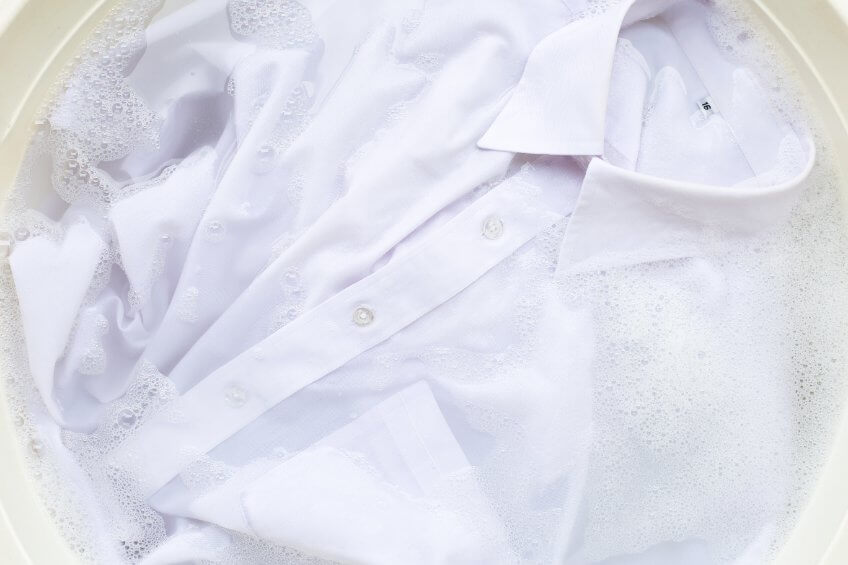 How to hand wash a shirt
How to hand wash a shirt
Fill the sink with lukewarm soapy water. Place the shirt into the water. Allow the shirt to soak for about ten to thirty minutes, depending on how dirty the shirt is. Agitate the shirt gently to loosen any dirt. Do not wring the shirt out, just let it drain. Once the water runs clear, turn off the faucet and allow the shirt to drip dry. If the shirt is really wet, wrap it in a clean towel and lay it flat to dry. After the shirt dries completely, fold it up and store in a drawer or hang.
How to hand wash a sweater
Before hand washing a sweater, triple-check the label. If it says dry clean only, don't bother. Dry cleaning involves putting a special solution into a machine that heats the garments to very high temperatures — about 140 degrees Fahrenheit — while spinning them around to kill bacteria. But some fabrics, like wool, are delicate materials that can shrink or lose color over time, so they require extra care.
If you do decide to go ahead and try hand washing, remember that synthetic fibers tend to hold smells more than natural ones, so you'll probably want to use a little extra time and care.
To avoid shrinking or losing color, keep your sweaters away from heat sources like radiators or stoves. And since you'll likely be wearing them again soon, consider hanging them up to air out after wearing instead of folding and putting them away directly after wearing.
How to hand wash bras
Hand washing bras is easy. Always use a gentle detergent made for delicates. Use cool or warm water and gently wash, rinse with cool water. Gently squeeze out excess water and hang to dry.
How to hand wash underwear
Hand washing your underwear is easy.. Soak your undergarments in warm, but not hot, water for 5 to 30 minutes. Agitating occasionally helps loosen dirt and stains. Squeeze out the excess water, and rinse under running water.
How to hand wash jeans
Hand washing jeans isn’t hard, but it does require some extra steps. If you accidentally spilled something on your jeans, put the jeans in cold, soapy water. After soaking for about 30 minutes, rinse out the jeans in clean water. Let the jeans hang dry.
How to hand wash wool
Wool is one of those fabrics that need special care. If you don't know how to do it properly, you could end up damaging your fabric. Here are some tips for washing your wool garments. Always read the label first.
1. Use cold water. The best temperature to wash wool is around 40 degrees Fahrenheit, according to the American Association of Textile Chemists and Colorists. Hot water can shrink the fibers and make them less durable.
2. Don't squeeze the water out. You want to gently squeeze out excess water without wringing the item. This helps prevent wrinkles and makes sure there isn't too much water left behind.
3. Roll in a towel. After squeezing out the excess water, roll the item in a clean towel to absorb the moisture.
4. Dry flat. Lay the item on a clean towel and let it air dry completely. Avoid exposing it to sunlight or high heat.
5. Store away from direct light. Once the item is dry, store it in a dry place.
More Tips for Handwashing Clothes
The best way to wash your clothes is by hand washing. Machine washing can damage colorfastness and shrinkage. . If you are unsure about how to properly clean your clothing refer to the label.
Washing Your Undies in Hot Water Will Shrink Them
When you wash your underwear in hot water, you're actually shrinking it. So, when you put your dirty undies into the machine be certain to set the temperature to cold and on delicate for the best results.
The dryer may also shrink your undies so consider hanging them to dry.
What About Hand Washing and Bleach?
Bleach is another chemical that breaks down fabrics. If you need to add a little bleach when handwashing you need very little.
Attention: Use discount code "SHOP10" at checkout to save 10% on The Nori Press!
Pro Tips: Travel with Easy to Clean Fabrics
Traveling with easy-to-clean clothes saves time and money, Cotton Fabrics are easy to hand wash and dry. Cotton fabrics are also great for traveling because they resist stains and won’t shrink. However, cotton is very absorbent and needs to be washed regularly.
Wool is a good alternative if your destination isn’t too hot. It will keep you warm and breathes well. Often times you can simply hang it up and let it air out to wear again.
Polyester/cotton blends work well for activewear. These fabrics are durable enough to withstand daily wear and tear, but they still maintain their shape.
Fabrics that are hard to hand wash and dry:
Garment makers are creating fabrics that resist stains and do not require hand washing. These new materials include polyester microfiber blends, nylon/polyester blends, and cotton/nylon blends. They are being used to make sportswear, activewear, and travel wear.
Wool is still the king of fabric stain resistance, but other fiber types are catching up. Cotton ranks second behind wool in terms of stain resistance. Other synthetic fibers like modal and acrylic rank third and fourth respectively.
Travel clothing should be easy to clean and dry. Most travelers will want to carry just one pair of pants, shirt, and underwear. If you plan to pack multiple pairs of each item, consider packing items that are machine washable.
Laundry Essentials for Hand Washing
Laundry essentials for hand washing include:
• A sink or bucket
• An old towel (or two)
• Laundry soap
• Clothesline
• The Nori Press, not an iron
• Dryer sheets
• Tumble dryer
• Detergent
• Fabric softener
• Stain remover
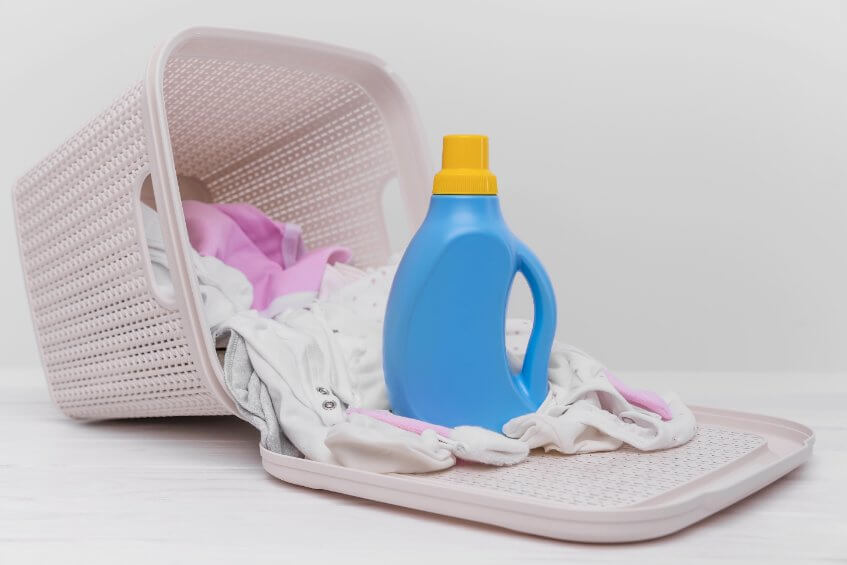 The Best and Worst Soaps to Use for Hand Washing Laundry
The Best and Worst Soaps to Use for Hand Washing Laundry
Ok in a pinch: shampoo
Hand washing clothes with shampoo isn’t recommended since it won’t remove stains or grease like laundry detergent does. Instead, use shampoo in a pinch.
Best: detergent, a bar of laundry soap, or laundry sheets
When traveling, there are many things to consider, like where to sleep, how much money to spend, and how to keep yourself clean. But one thing you might want to think about is what type of detergent to bring along. There are three main types of detergents: liquid, powder, and bars. Each type has advantages and disadvantages. Here’s what each type of detergent does best.
Liquid Soap
Liquid soaps are great because they are concentrated and don't take up much space. They're also good for people who travel light and don't want to carry around too much weight. Liquid soaps tend to be milder than bar soaps, though some brands do contain harsh chemicals. If you wash clothes without fabric softener, liquid soaps work well. You'll find liquid soaps in most hotels, department stores, drugstores, and grocery stores.
Bar Soap
Bar soaps are usually packaged in small plastic pouches that fit easily into your suitcase. Bar soaps are convenient because they come in individual packets and are ready to use. Many travelers prefer bar soaps because they are gentle and won't strip the color out of clothing. Some bar soaps even include fragrance. However, bar soaps are harder to rinse off of clothes and can cause damage to fabrics if used incorrectly. If you plan on washing your clothes without fabric softeners, bar soaps are ideal. You'll find bar soaps in most hotel bathrooms, department stores, drugstores, and grocery stores.
Laundry Sheets
Laundry sheets are similar to bar soaps in that they come in individual packets. Like bar soaps, laundry sheets are convenient because they are already prepped to go in your suitcase. However, unlike bar soaps, laundry sheet packets aren't typically very big. This makes them perfect for those times when you just need to freshen up quickly. You can use them anywhere—hotels, airports, bus stations, etc.—and they're easy to use in public restrooms. Because they are thin, they can be folded multiple ways, making them easy to store in your luggage. You can find laundry sheets in most department stores, grocery stores, and online retailers.
 Some final tips on washing clothes on the road
Some final tips on washing clothes on the road
Washing clothes while traveling is one of those things you do because it needs to be done, but don't want to spend too much time on. But there are ways around this problem. You can wash clothes in a hotel room, use a travel detergent, bar soap or even a little dish soap. All three methods work well enough, but none of them are perfect. Here are four tips for washing clothes on the road.
1. Use a Travel Detergent
Travel detergents are designed to clean dirt off clothing, but they're also good for cleaning up stains like mud and grass. They're usually formulated to be gentle on fabrics and won't cause shrinkage.
2. Wash Clothes Without Fabric Softener
Fabric softener strips are great for keeping clothes fresh, but they can leave behind residue that's hard to remove. Instead, try washing clothes with no fabric softener.
3. Dry Your Clothes Properly
You should always dry your clothes properly after washing them. A dryer is best, but an air-drying rack will also work.
4. Pack Lightly
If you pack lightly, you'll save money and not have to worry about weight restrictions. Just remember to pack a few extra pairs of underwear and socks.
In conclusion, washing clothes on the road isn't difficult, but it does require some planning ahead. To avoid having to wash your clothes every day, pack light and use a travel detergent. And if you ever run out of detergent, you can always buy more at any local grocery store.




